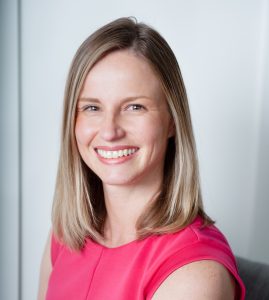 My latest MoneySense Retired Money column looks at a financial planning software platform called Viviplan. You can find the full article by clicking on the highlighted text: What I learned by putting Viviplan to the test.
My latest MoneySense Retired Money column looks at a financial planning software platform called Viviplan. You can find the full article by clicking on the highlighted text: What I learned by putting Viviplan to the test.
Viviplan is the third retirement planning package I’ve tested this year, perhaps — as the MoneySense article reveals — the topic is getting all too real for me now that my wife, Ruth, has told her employer she plans to retire when she turns 65 next summer. I’m a year older and have been somewhere between self-employed and semi-retired for most of my 60s.
Previously we have looked at a couple of packages created by Emeritus Financial Strategy‘s Doug Dahmer — who is a frequent contributor to the Hub — as well as Ian Moyer’s Cascades, which you can read about in an earlier column by me here. Dahmer offers a choice of two packages: Retirement Navigator and BetterMoney Choices.com.
All these packages deserve consideration and work in more or less similar fashion. To do the job justice, you need to have handy — or at least summary information — such documents as your latest tax returns, brokerage statements, Service Canada CPP and/or OAS projections, as well as having a good grasp of your regular and occasional monthly expenses.
Having most recently performed this exercise with Viviplan — and as one of the users we interviewed for MoneySense relates — it can be a bit scary to see in black and white just how expensive daily living can be. The package won’t let you forget any tiny expense, from pet food to boarding your pet when you’re on vacation (or arranging to hire a neighbour’s teenager, which is what we do if we go away and must leave our cat behind.)
Viviplan calls itself a Robo Planner
Viviplan — which has been dubbed “Canada’s Robo Planner” — is the brainchild of financial planner Rona Birenbaum. Birenbaum also runs a separate fee-for-service financial planning firm called Caring for Clients. I have consulted her for various pieces in the past, particularly about annuities.
Indeed, when I was putting Viviplan through its paces, one of the big questions I had was whether there was a need for us to partly annuitize, seeing as Ruth has no employer-provided Defined Benefit pension at all (just a hefty RRSP), and I have only two modest DB pensions that are not inflation-indexed.

Our main question was whether to make up for this lack of employer pensions by at least partially annuitizing, or what Moshe Milevsky and Alexandra McQueen call in the title of their book Pensionize Your Nest Egg. Another author, Fred Vettese in Retirement Income for Life, was in a similar situation when he reached 65 (the same month as I did) and had suggested annuitizing 30% of his nest egg at 65 and doing another 30% at age 75 (assuming CPP at 70). Our question for Viviplan was whether this would make sense for us too, or just for Ruth.
We went back and forth with Calgary-based certified financial planner and product manager Morgan Ulmer (pictured to the right). As she relates in the MoneySense piece, “it’s certainly not necessary,” since at today’s interest rates, Viviplan told her that for us a pure GIC portfolio could get us to where we want to go, with the virtue of more financial flexibility and higher final estate value. Like the other programs, Viviplan recommends delaying CPP till 70 and OAS too if possible.
Annuitize? No wrong decisions and no rush
Partial annuitization for Ruth along the lines of what Vettese suggests would result in a slightly lower estate for our daughter. “With annuities, you are making a choice between legacy and flexibility versus security and longevity protection,” Ulmer said in the plan’s written recommendations, “There are no wrong decisions here, and there is also no rush.”
Of course every situation is different, which is why you need to enter your own parameters and data into whichever of these programs you choose to use. Like the other packages, Viviplan also recommended a “topping up to bracket” strategy during the five or so years of relatively low-tax bracket years between 66 and 71, which is when forced annual RRIF withdrawals must commence. However, Ulmer said, given our expected long time horizon (living ‘till our mid 90s), apart from saving on OAS benefit repayments, topping up to bracket provides “noteworthy, but not exceptional value” because we will eventually withdraw most of the funds from our registered investments.
In this blog, I’ve focused on our personal situation, but the MoneySense column also looks at a slightly younger couple who are in their mid 50s and about a decade from Retirement (Eddie and Jocelyn), as well as a young Calgarian man, called Don in the piece, who’s in a great Defined Benefit pension and plans to stay in it until he can retire by 55 or so. He also happens to be one of the few true “Couch Potato” index investors I’ve encountered over the years.
If you’re a semi-retired Baby Boomer, I highly recommend Viviplan or the other programs mentioned here. It’s actually a pretty interesting exercise to see how pensions, RRIF withdrawals, non-registered income, CPP and OAS all interact and the actions to take are seldom obvious: you are often making tradeoffs. You can defer CPP to 70, for example, but will the extra income that results knock you into the OAS clawback zone? You owe it to yourself to find out before you go down a particular path that may be irreversible.



In light of increased longevity forecasts why doesn’t the government move the age for winding down rrsps upwards. And do the same for when mandatory drawdown of rrifs need to start?